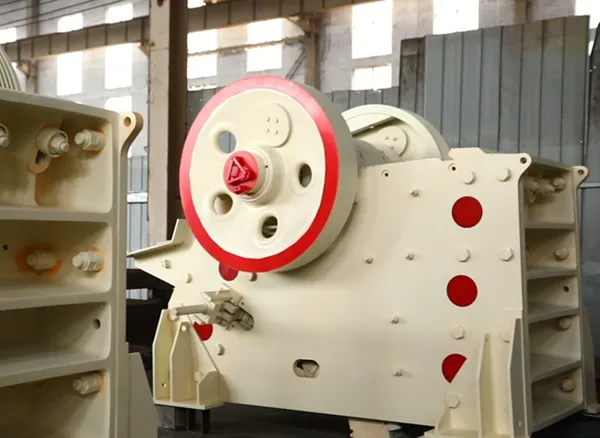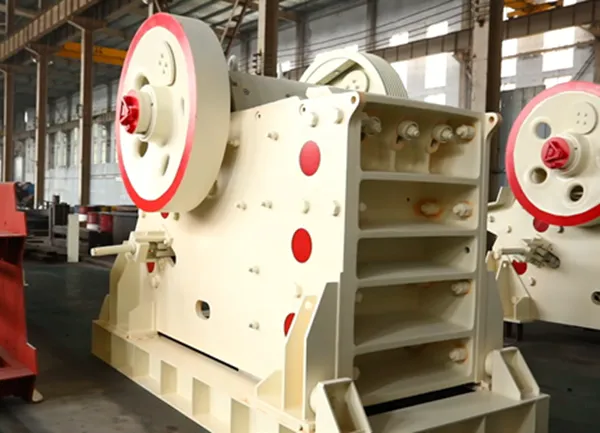Preventing jaw crusher blockages and downtime is crucial for maintaining efficient and profitable operations. Here's a comprehensive guide on how to achieve this.

Consistent Feeding: Ensure a uniform and continuous feed of material into the crusher. Avoid sudden surges or uneven loading, which can overload the crushing chamber. Using a feeder (e.g., vibrating feeder) is highly recommended for controlled and even material flow.
Proper Sizing: Make sure the feed material size is appropriate for the jaw crusher's gape (feed opening). Oversized material is a primary cause of blockages. A good rule of thumb is that the maximum feed size should be about 80% of the crusher's opening. Consider pre-crushing or using a scalping screen to remove oversized material.
Remove Contaminants: Prevent tramp metal (e.g., bucket teeth, wear plates), wood, and other non-crushable materials from entering the crusher. These can cause blockages and damage the crusher components. Implement magnetic separators or manual sorting to remove such contaminants.
Moisture Control: Manage the moisture content of the feed material. Wet or sticky materials can adhere to the crushing plates and cause blockages. Consider pre-drying options if dealing with high-moisture content material.
Avoid Overfeeding: Operate the crusher within its designed capacity. Overfeeding reduces crushing efficiency and significantly increases the risk of blockages. Monitor the crusher's power draw (ammeter reading) to avoid overloading.
Daily Inspections: Conduct daily visual checks for material buildup in the crushing chamber and discharge area. Ensure the discharge port is clear. Inspect for loose bolts, cracks, and any signs of wear on jaw plates and other components.
Lubrication: Adhere to the manufacturer's lubrication schedule for bearings and other moving parts. Proper lubrication minimizes friction, reduces wear, and prevents overheating, which can lead to downtime. Avoid over-greasing.
Jaw Plate Management:
Inspect jaw plates daily for uneven wear, which may indicate feeding issues.
Rotate or replace worn jaw plates before they become too thin to prevent damage to the crusher frame.
Ensure jaw plates are properly aligned and bolted tightly.
Toggle Plate Maintenance: Check the toggle plate tension regularly to ensure proper jaw alignment and movement. Inspect for cracks or damage and replace as needed.
Bearing Checks: Regularly inspect bearings for unusual noise or excessive heat. Monitor bearing temperatures and log them for trend analysis. Replace worn or damaged bearings promptly.
V-Belt Maintenance: Check the tension and condition of V-belts regularly. Replace loose or damaged belts to ensure efficient power transmission.
Discharge Area: Ensure the discharge chute and any downstream conveyors are clear and functioning correctly to prevent material buildup that can back up into the crusher.
Dust Suppression: Implement and maintain a dust suppression system (e.g., water spray) to help moisten the material and reduce dust, which can contribute to blockages and wear.
Maintain Records: Keep a detailed record of inspections, maintenance activities, and any instances of blockages or downtime. This helps identify recurring issues and optimize maintenance schedules.
In-Line Feeding: Whenever possible, feed the jaw crusher in line with the feeding machine (e.g., feeder or scalping screen). This helps to direct the material flow and reduces the chance of material clogging.
Choke Feeding (When Appropriate): Some jaw crushers operate most efficiently when the crushing chamber is at least 80% full. This "choke feeding" can help draw material down and improve crushing action. However, ensure this practice doesn't lead to overloading.
Trained Operators: Ensure all operators are properly trained on the correct operation and safety procedures for the jaw crusher. This includes understanding feeding best practices, recognizing potential issues, and knowing the correct procedures for clearing blockages safely.

Stop and Isolate: If a blockage occurs, immediately stop and isolate the crusher from the power source before attempting to clear it.
Safety First: Clearing blockages can be dangerous due to the potential for sudden release of stored energy and material. Only trained and competent personnel should perform this task.
Mechanical Removal: Whenever possible, use mechanical means (e.g., excavators with rock breakers, winches) to remove the blockage from a safe distance.
Manual Removal (As a Last Resort): If manual removal is necessary, ensure the crusher and associated plant are stopped and isolated. Personnel entering the crushing area must follow strict safety protocols and wear appropriate personal protective equipment (PPE).
Inspect After Clearing: After clearing a blockage, inspect the crusher for any damage before restarting.
By implementing these preventative measures and adhering to safe operating procedures, you can significantly reduce the occurrence of jaw crusher blockages and minimize costly downtime, leading to increased productivity and a safer working environment.
Address: Luoyang Luoxin Industrial Park, Henan,China
E-mail: sales@yd-crusher.com
Phone: 86-139-3993-0123

Yude
Mechanical
Create the greatest value for customers
Provide the best quality products and services
86-139-3993-0123
sales@yd-crusher.com
Luoyang Luoxin Industrial Park, Henan,China